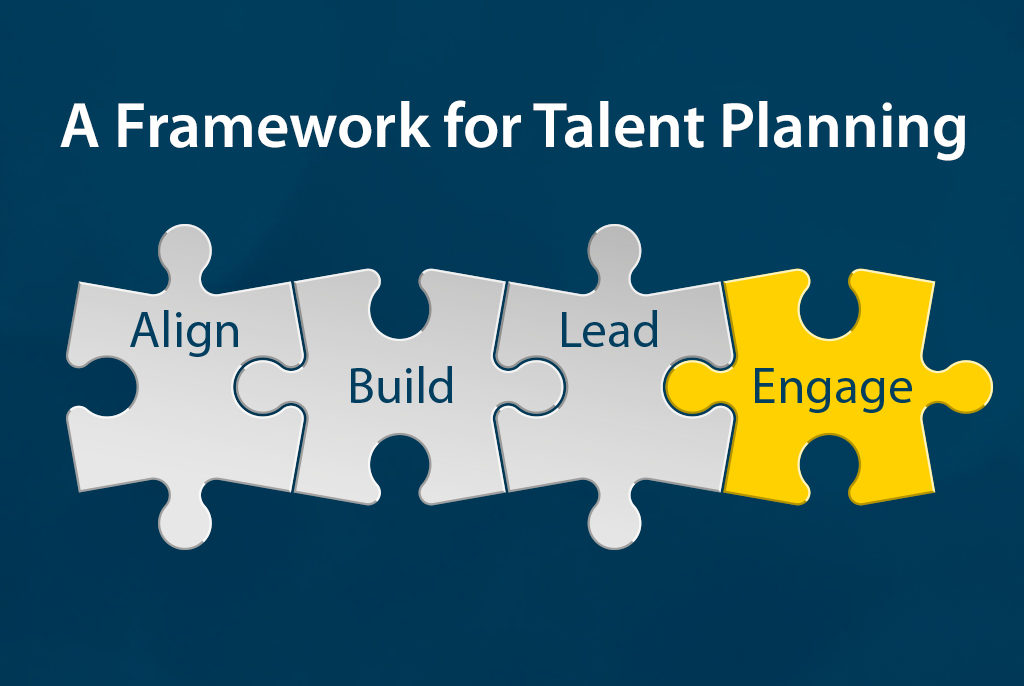Engage the organization

As we’ve explored in this blog series, the ABLE Framework was created by National Center for Middle Market (NCMM) to help companies better structure and coordinate their talent planning activities.
As a reminder, the framework has four parts:
Part 1: Align talent strategy with corporate strategy
Part 2: Build the processes you need—but don’t overbuild
Part 3: Lead by example
Part 4: Engage the organization
Now that we’ve explored Align, Build and Lead, let’s move on to Engage.
Engage
Not surprisingly, when leadership is committed to the talent planning process, the effectiveness of your talent planning is likely to improve. It’s important, at the same time, to actively engage your entire organization in talent planning activities. If employees don’t experience the value of talent planning themselves, your efforts will bear much less fruit.
One of the ways to do this is by clearly defining, identifying and developing “high potentials” and “top performers” in your organization. Make sure you communicate the distinction between these two categories so everyone understands it. You want to be able to measure how well somebody is performing in a job and how much potential they have to grow into a job.
Everyone is a high potential when you hire them; otherwise, you wouldn’t hire them. Naturally, as time goes on, some new hires will become great performers, while others won’t. Some will also demonstrate great potential, while others will reach their level and stay there. It’s important for you and your executive time to recognize the great performer who has a lot of potential, and think about how to support the high potential whose work performance may be sub-par.
To promote further engagement, make sure you get performance reviews right. Too many companies don’t. If you Google “Dilbert” and “performance review,” you’ll see some of the most cynical and hilarious cartoons about performance reviews, and many of these scenarios represent what actually happens in some companies.
If you get your employees on board with performance reviews and other talent planning processes, they’ll often discover that they’re learning and growing in the organization. Help them to feel like they’ve got a dog in this hunt as much as your management team does. It makes a critical difference.
The “engage” checklist
• Implement a process to identify top performers
• Ensure that top performers are rewarded appropriately
• Develop a clear definition of “high potential” and create a process to identify high potentials
• Ensure the organization understands the difference between performance and potential
• Ensure the organization understands the difference between “high potentials” and annual ratings of potential
• Develop programs to help high potentials grow
• Develop a mentoring program for (at least) high-potential talent
Others in this series
Align talent strategy and corporate strategy
Build the processes that you need
Lead by example
Category: Talent Management

